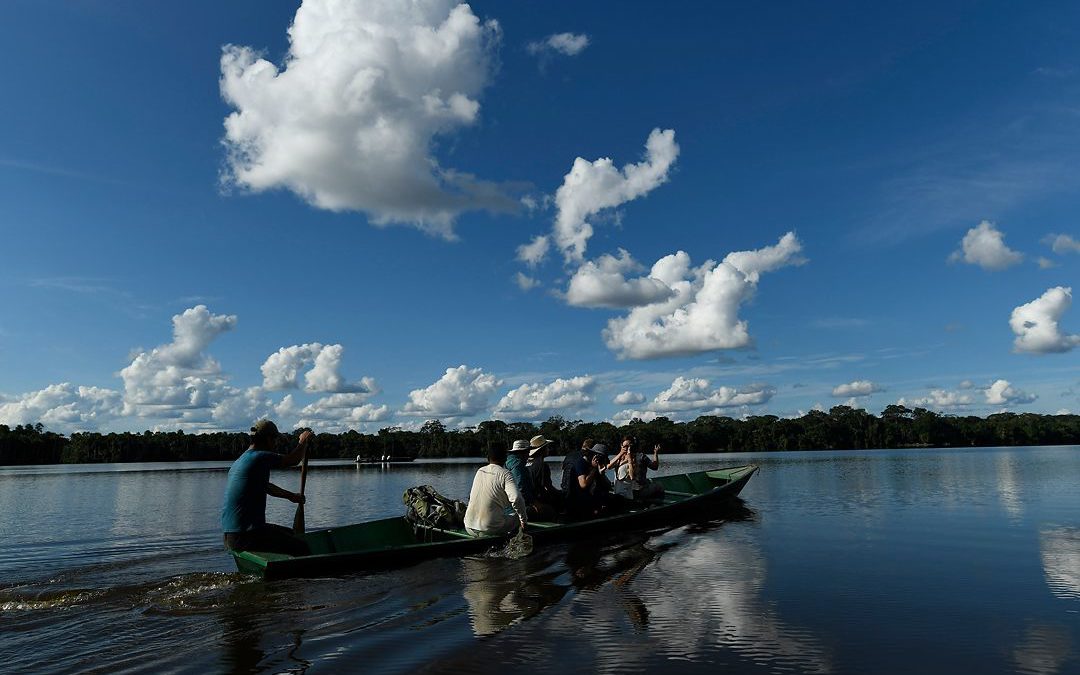This spring, due to some unusual scheduling, I led my fifth and six trips to Peru. The first, in March, included my second visit to the Peruvian Amazon. It’s a unique ecosystem, teeming with life, which would seem to make it a great place for photographers. However, it’s also a rainforest. And that brings challenges including heat, rain and humidity to an Amazon adventure.
The first challenge, though, involved simply getting there, which takes the better part of a day:
1 – Fly to Puerto Maldonado.
2 – Collect luggage, load up on a bus to go to the local outfitter.
3 – Once there, transfer some personal gear (clothes and toiletries for three nights) into a small duffle for the porters. Each person will then carry their own rain gear, water and camera equipment for the trips in and out.
4 – Select a pair of knee-high rubber boots, which will be your primary footwear for the next four days.
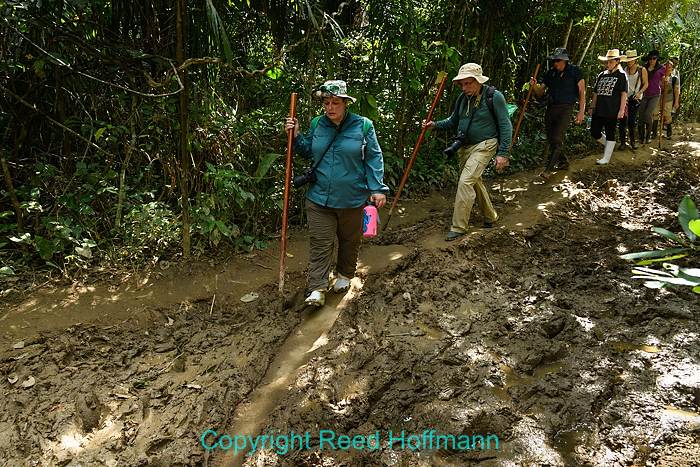
And this is the reason for those boots – two miles of mostly muddy trails. Although there were a few boardwalks and stepping stones, the poles they provided were invaluable. Photo copyright Reed Hoffmann. Nikon DSLR, Aperture Priority, ISO 800, 1/320 at f/5, -0.7 EV, Nikkor VR Zoom 24-120mm f/4G IF-ED lens at 24mm.
5 – Take the bus to the river, board a large motorized canoe for a 45-minute ride, enjoy a local lunch of fried rice wrapped in a leaf on the way.
6 – Dock, climb a set of rickety stairs and start a two-mile hike on a muddy trail. Be prepared to sweat profusely.
7 – Finally, scramble aboard a smaller canoe for a paddle through the jungle and on to your final destination (thankfully, the guides do the paddling).
Sandoval Lake Lodge was our home for the next three days, and it’s a lovely place. True, power is limited to a few hours each morning and evening. And there’s no air conditioning, which means your stuff never really dries out. But as they say in real estate, location is everything. Built above the shores of Sandoval Lake, this eco-lodge is one of the few places in the Amazon you’re almost guaranteed to spot giant lake otters. In fact, we saw them every day except the morning we left. And of course being a jungle, it’s lush and literally crawling with life. Bugs, birds reptiles and the occasional mammal (like the otters). But again, that jungle presents additional challenges for photographers
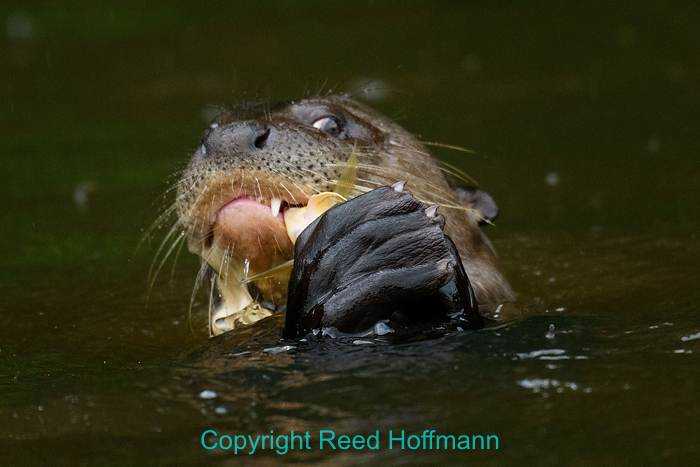
Over the course of three days we had several encounters with a family of six giant lake otters. They spend most of their time hunting, with fish being their main (though not only) source of food.
Photo copyright Reed Hoffmann. Nikon DSLR, Aperture Priority, ISO 4000, 1/500 at f/5.6, -0.7 EV, Nikkor VR Zoom 80-400mm f/4.5-5.6G IF-ED lens at 400mm.
Jungles, thanks to their lushness, are dark, with clear views of more than 50-feet rare. For instance, while monkeys were busy making a racket in the trees above the lodge during our visit, it was tough to get good photos of them. Still, photography is why we chose this lodge. While we could (and did) do jungle walks, the main draw was being able to go out on the water. That gave us not only good light, but open views of the jungle along the lake. When birds and monkeys were in the trees there, we had some nice opportunities for photos.
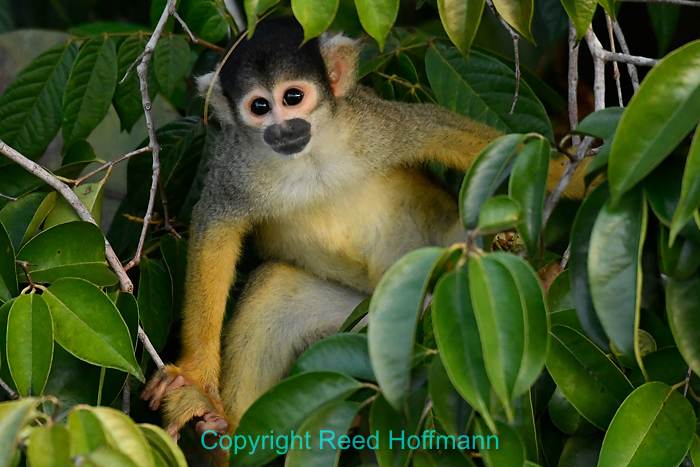
We found a group of spider monkeys at the edge of the lake just before dark. Which meant we had to use extremely high ISO’s to make pictures, but fortunately the cameras were up to it. Photo copyright Reed Hoffmann. Nikon DSLR, Aperture Priority, ISO 6400, 1/250 at f/5.6, -0.3 EV, Nikkor VR Zoom 80-400mm f/4.5-5.6G IF-ED lens at 400mm.
The biggest challenge for photography there is exposure. In the jungle, and often on the lake, we had to use high ISO’s. In the jungle because of the dense vegetation. On the water, because of the movement of the canoes. Put eight to ten people in a canoe, even large ones like we had, and there’s going to be a lot of rocking. That meant we raised the ISO to make sure we were able to maintain high shutter speeds, (1/1000 and above), even in the rain. And the rainforest lived up to its name. Thanks to ponchos and rain covers for our camera gear, we didn’t let that stop us.
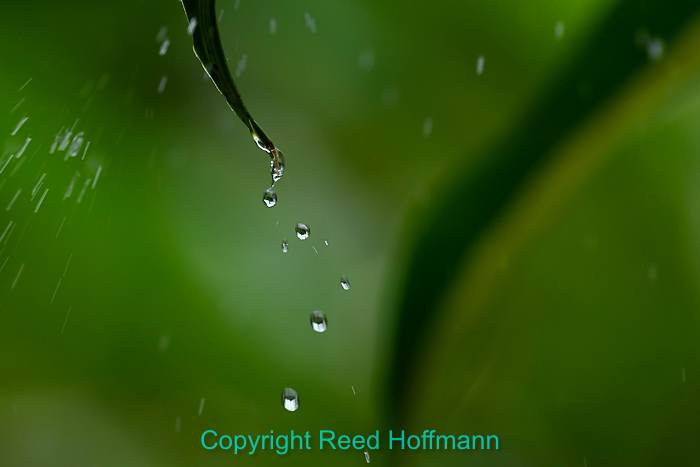
You know it’s going to rain, so you plan accordingly. While you could take advantage of the rain to nap in one of the hammocks (and many of us did!), there were also some nice photos to be made. Photo copyright Reed Hoffmann. Nikon DSLR, Aperture Priority, ISO 1000, 1/500 at f/7.1, -1.0 EV, Nikkor VR Zoom 80-400mm f/4.5-5.6G IF-ED lens at 400mm.
Was it worth the hassle of getting there? Yes. But I’d only recommend it if you can stay at least three nights and are prepared for some discomfort. Less than that and I think the difficulties would outweigh the pictures, since it’s takes so much time to get in and out. With three nights, though, and decent weather, it’s a great experience with some wonderful photo opportunities. I hope to return again someday. Want to join me?
(If you like this, please share it with your friends, and let them know about the links about photography I post on my business Facebook page. I’m also on Instagram and Twitter, @reedhoffmann)
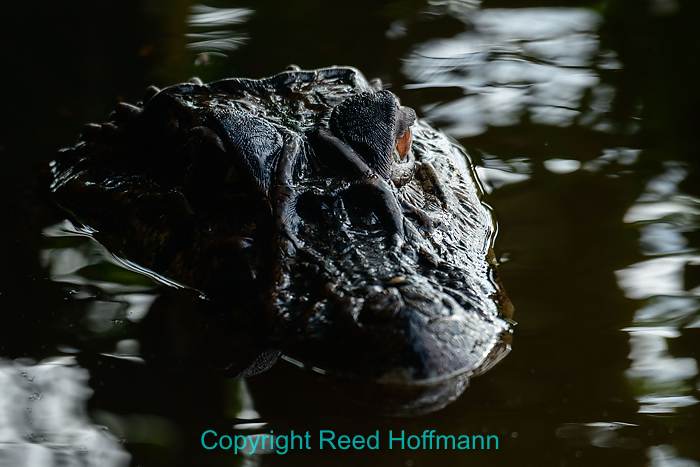
“Coco” was the name the lodge gave to a fully-grown black caiman that liked to hang out near the dock. We hoped it wasn’t because it found tourists tasty! Photo copyright Reed Hoffmann. Nikon DSLR, Aperture Priority, ISO 900, 1/800 at f/5.6, -0.7 EV, Nikkor VR Zoom 80-400mm f/4.5-5.6G IF-ED lens at 400mm.
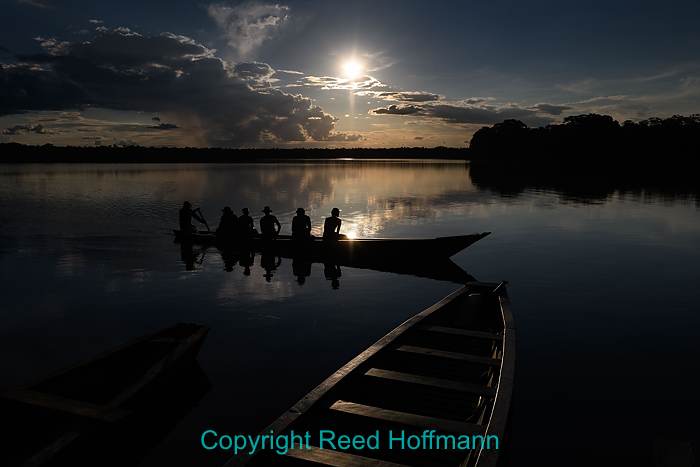
We were blessed with mostly beautiful weather, aside from the occasional heavy downpour. Photo copyright Reed Hoffmann. Nikon DSLR, Manual, ISO 64, 1/1600 at f/8, -0.7 EV, Nikkor AF Zoom 18-35mm f/3.5-4.5G lens at 27mm.
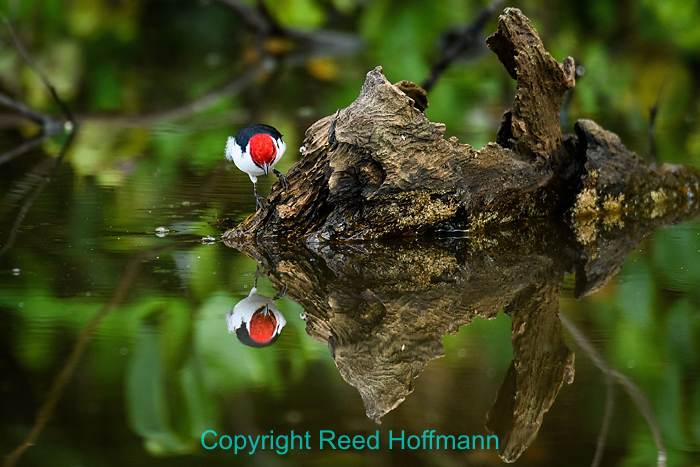
This red-capped cardinal couldn’t have picked a better spot to fish, with the smooth water giving us mirror surface to work with. Nikon DSLR, Aperture Priority, ISO 2500, 1/1250 at f/5.6, -0.7 EV, Nikkor VR Zoom 80-400mm f/4.5-5.6G IF-ED lens at 400mm.
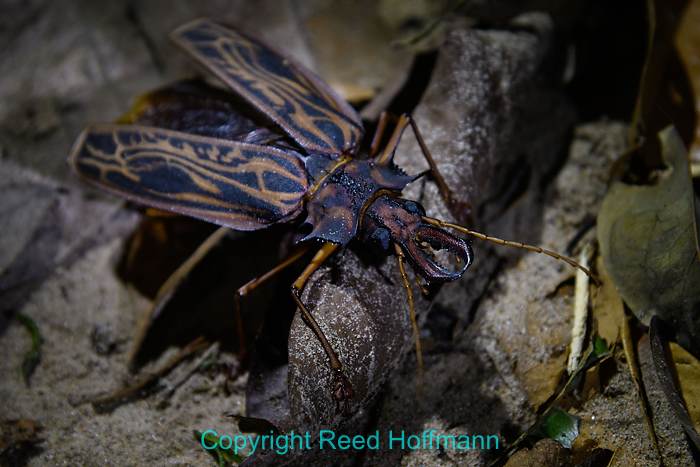
The jungle’s quite active at night, so of course the lodge offers night hikes. This bug was big enough that a close-up lens wasn’t necessary, and a couple of flashlights were all that was needed for light. Photo copyright Reed Hoffmann. Nikon DSLR, Manual, ISO 1250, 1/320 at f/4.5, 0.0 EV, Nikkor VR Zoom 24-120mm f/4G IF-ED lens at 180mm.
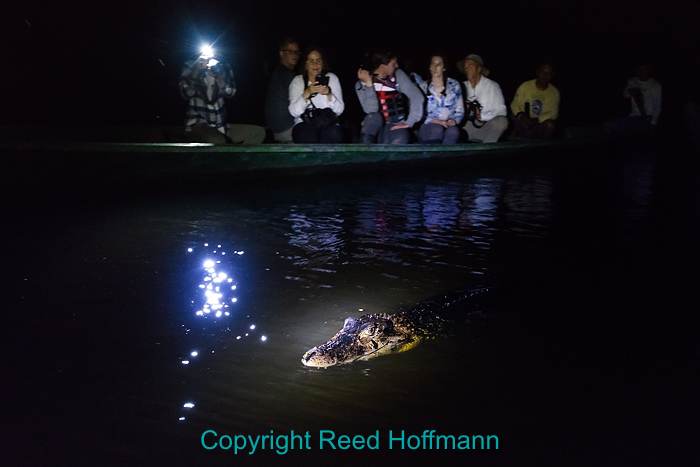
Two of the nights we stayed out on the lake after dark, which is a good time to look for caimans. This one let us get surprisingly close, which was a bit unnerving. Photo copyright Reed Hoffmann. Nikon DSLR, Manual, ISO 10,000, 1/30 at f/4.5, 0.0 EV, Nikkor AF Zoom 18-35mm f/3.5-4.5G lens at 35mm.

